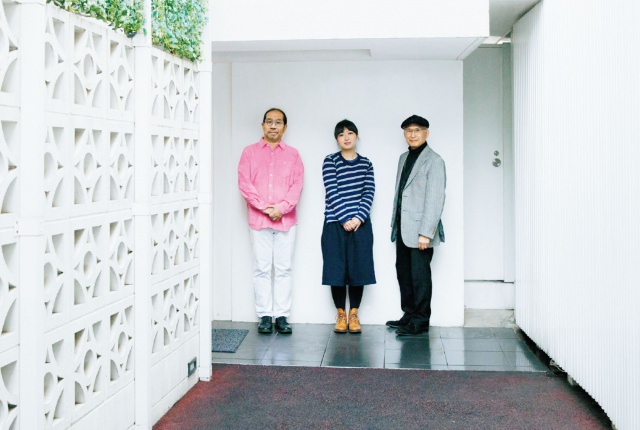vol.
012
MARCH
2016
vol.012 / Roundtable
Grasping the Unseen with Both Hands
Jun Aoki (architect) × Reijiro Tsumura (noh actor) × Haruka Kojin (contemporary artist)
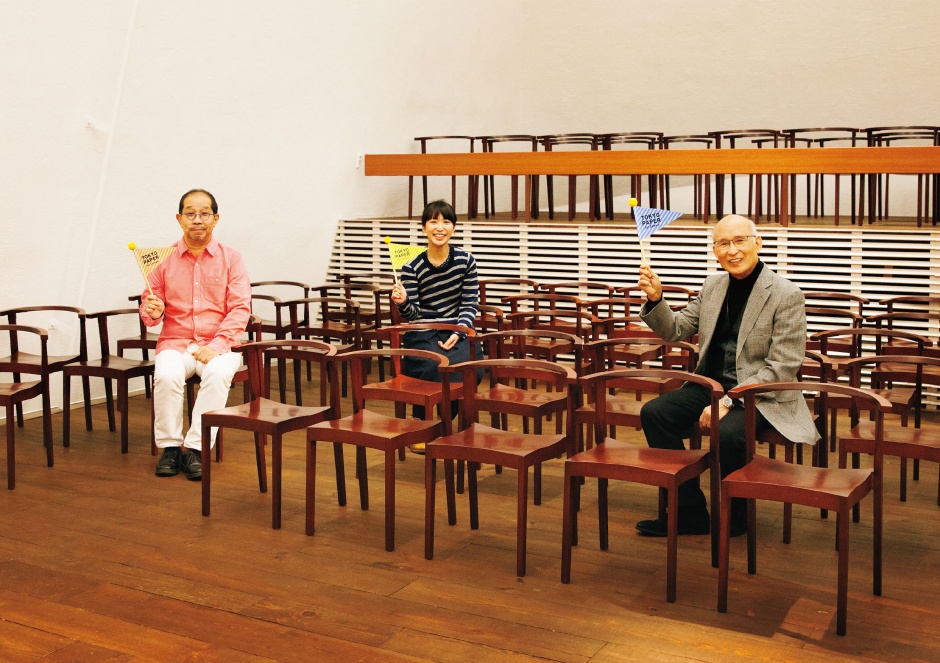
The intimate concert hall, “sonorium,” adored not only by Japanese musicians, but also by illustrious performers from across the globe. This pure white hall, in which all equipment exists solely for the purpose of the music, was designed by Jun Aoki. This issue’s guest researchers — architect Jun Aoki, Noh actor Reijiro Tsumura, and contemporary artist Haruka Kojin — met here for the first time today.

Stamping one’s feet hard on the ground
Reijiro Tsumura: The concert hall, “sonorium,” was a wonderful space. The wooden floor made a particular impression on me. The floors of Noh stages are made of planks of cypress sanded completely smooth to make it suitable for the Mai performance and I love the feel of that natural wood, so I couldn’t help but stamp my feet on the floor in the same way today.
Haruka Kojin: It really was a pleasant space to be in.
Jun Aoki: I’m so pleased. I wanted to create as simple a space as possible, because I wanted to make it an environment that would enable people coming to “sonorium” to focus purely on the music. That’s why the acoustic equipment has been designed to blend into the structure of the building itself, so at first glance, it looks like a rather primitive space with no acoustical design whatsoever.
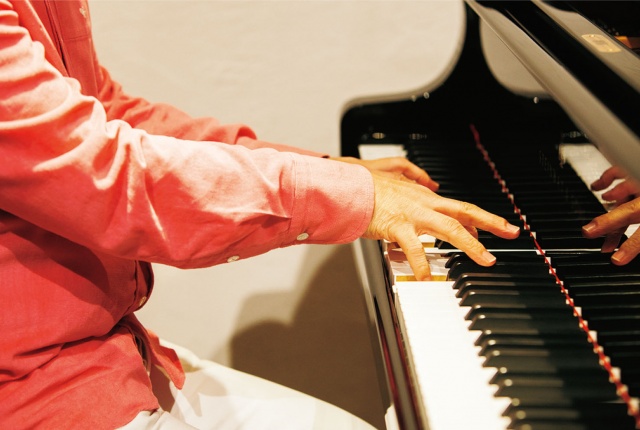
Tsumura: Even while we were just standing there, I felt as though I could hear music. Of course, I couldn’t actually see or hear anything. But you get a clear sense that it’s a space for producing sound, almost as though it’s radiating something like that. A lot of the atmosphere in Noh is created by the sound of the actor’s feet beating a rhythm. The dance steps are like stamping your feet hard on the ground. Just like when sumo wrestlers stamp their feet before a bout, it originates from a ceremony to pacify the spirits, so these beating movements of the feet have a very special significance for Noh actors.
Aoki: In architecture, too, it’s very important to engage with something you can’t see, similar to the sounds Tsumura san mentioned. While we architects do actually use our vision in our work, there’s a lot in the visible world that the eye is unable to perceive. As we know, the eye can’t see, such as gravity and the flow of people’s energy. When you come to realize this, you understand that architects are using the visible, while actually seeking to sense and convey the unseen. That’s how I see it.
Tsumura: It’s the same for me. When playing a role, a Noh actor is rendering the unseen human soul and human condition in visible form. At the same time, as in the Mugen Noh plays originated by Zeami, the fascination of Noh lies in the fact that invisible supernatural entities such as gods, ghosts, goblins, and demons make an appearance. Even on stage, they can’t be seen at the start. Then the information is gradually presented to the audience and these beings eventually reveal themselves. But even then, they’re still gods and ghosts. Performing such roles is really, really difficult for us (laughs). That’s exactly why it’s so effective for us to wear masks. Because it helps to erase the individuality of the actor, to some extent. I think using that as the starting point to build up the character creates a tale that the audience will understand.
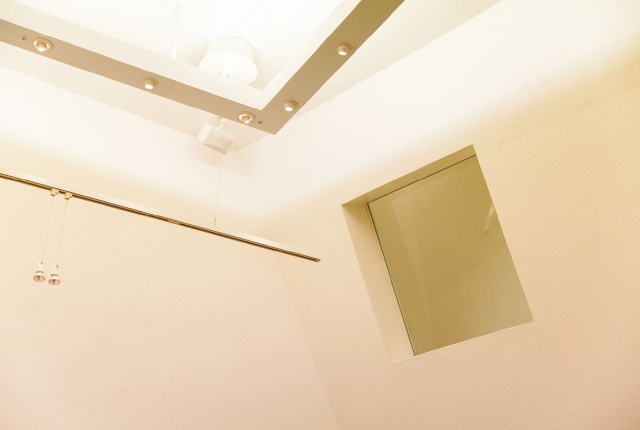
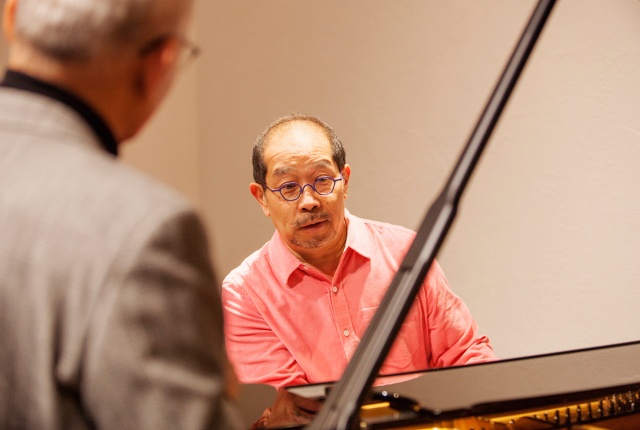
The guy’s face in the sky
Kojin: I really understand what you’re both saying. While most of my works emerge from everyday scenery, the majority of them look completely different from the actual landscapes that I actually saw. I think it’s because I actively engage with the inexplicable elements in the midst of scene to which people would not normally give a second thought. In that sense, I get the feeling that we’re really on the same wavelength, what with you, Tsumura san, playing the role of a ghost which nobody’s ever seen, and your way of looking at the flow of gravity, Aoki san, which is what lies behind structural requirements. And I think that it’s really the puzzling things that offer the greatest potential for expression.
Tsumura: Yes, we’re all on the same wavelength (laughs). I’ve never actually seen one of your works, so perhaps you could tell me what kind of works you create?
Kojin: OK. Right now I’m working as a contemporary art collective called “Mé.” We created the Utsunomiya Museum of Art Public Project 2014 Ojisan no Kao ga Sora ni Ukabu Hi [The day you will find the guy’s face in the sky]. As the name suggests, the work featured a big balloon of a middle-aged guy’s face up in the sky.
Tsumura: Is this guy a real person?
Kojin: Yes. We formed a “face collection team” in Utsunomiya and organized activities to find models for the guy’s face from among members of the public. We ended up with 218 candidates and then we held a “face conference” and chose one of them.
Tsumura: (Looking at information about the work) Ah, this one. He’s a slightly chubby, friendly-looking middle-aged guy.
Kojin: Apparently, when we actually put his face in the sky, the guy who was the model got a call from a friend he hadn’t seen for ten years, saying, “That’s you floating in the sky, isn’t it?” (Everyone laughs)
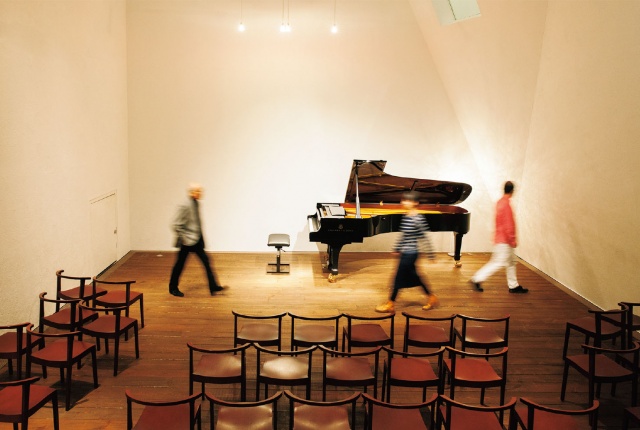
Kojin: When I first devised this project, I thought that I’d be turned down, in various respects. But even so, I mentioned it, trusting that my ideas would come across, and the director of the art museum and many other people were kind enough to lend me their support. On the big day, there was an even wider variety of reactions than I’d imagined. When they saw his face floating in the sky, some people burst into tears, while others burst out laughing.
Tsumura: It does somehow make you think back on something. Looking through and beyond that guy, your own thoughts start to emerge. When you look at his face floating above the riverbank, you gradually start to feel a bit melancholic, wondering “I wonder how that guy’s doing right now?” It’s as though “that guy” suddenly appears in your mind through the medium of this guy, even though you hadn’t consciously thought about him.
Kojin: I’m really glad you feel that way! It was incredibly refreshing to feel that sharing this middle-aged guy’s core perspective on the world with everyone was the starting point for the formation of each person’s own individual story.
Aoki: Was this work based on experiences in a landscape you had seen, as well?
Kojin: That’s right. Initially, the curator at the museum approached us and asked whether we could do something in that town, so I went to talk to the people there. We asked them, “Is there anything you’d particularly like to see in this town? Do you ever get the urge to go and look at art?” One of them said straight out, “No, there’s never anything that I feel I need to go and see.” So while Kenji Minamigawa (fellow member of “Mé”) and I were driving back from Utsunomiya, we were talking about what kind of work would actually make them feel they needed to go and see it, and I suddenly remembered the face of a middle-aged guy I once saw in a dream when I was a junior high school student.
Aoki: So this landscape was in your dream?
Kojin: Yes. I was looking out of the window of a train and this middle-aged guy’s face was just floating there in the sky, shining just like the moon. When I had that dream, I knew that it wasn’t real, but I felt as though something really important was hidden in there. I told Minamigawa that and he said, “Let’s do that. Let’s collect people’s faces in the town.” So he actually persuaded me to do it.
